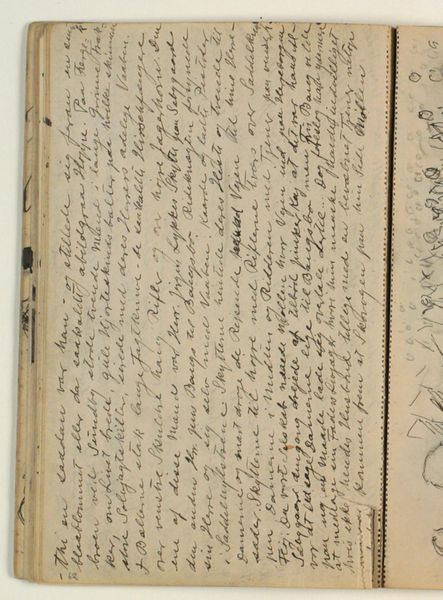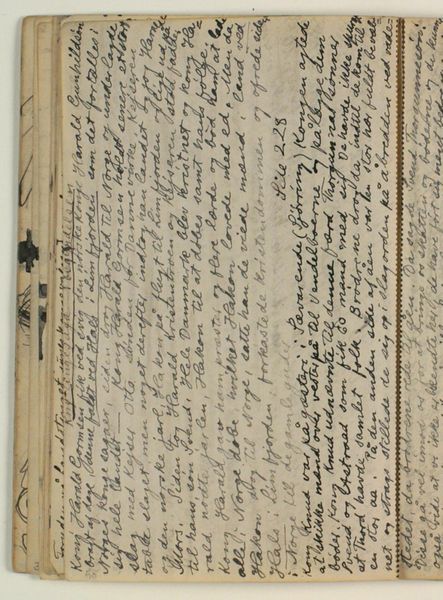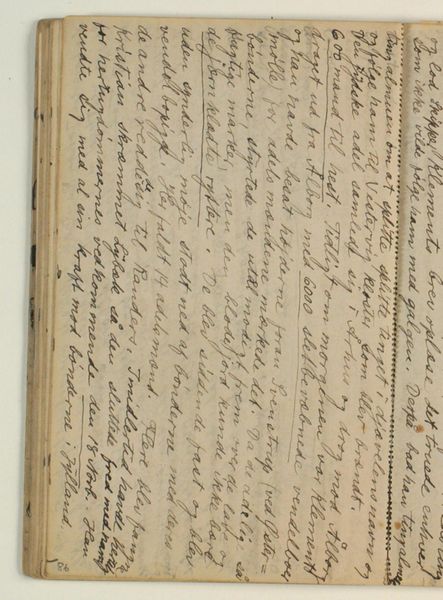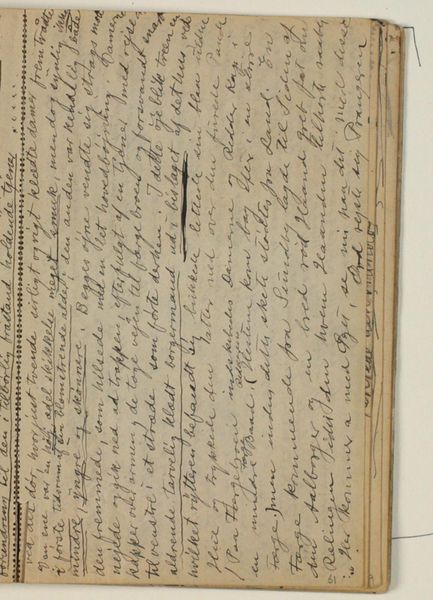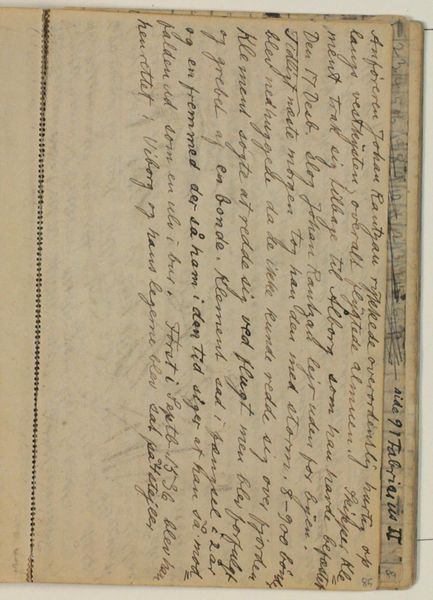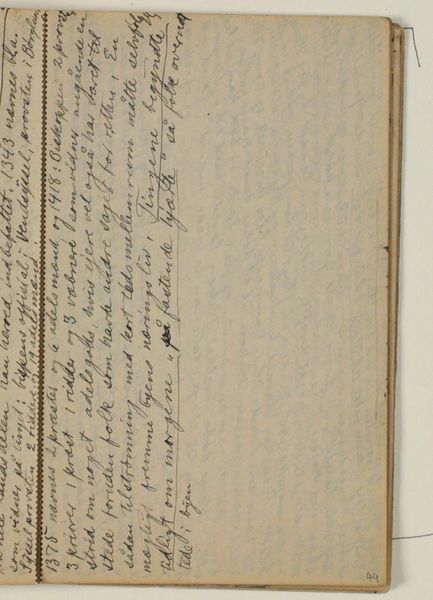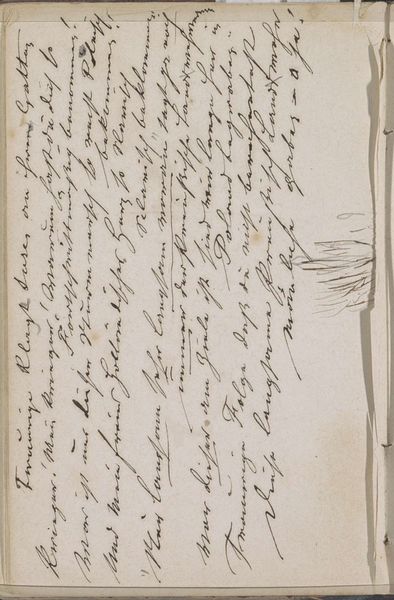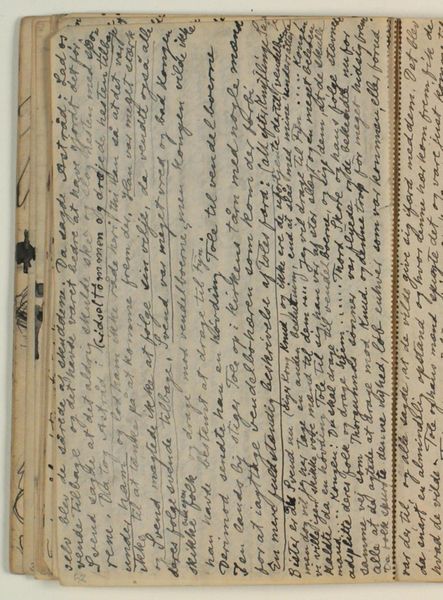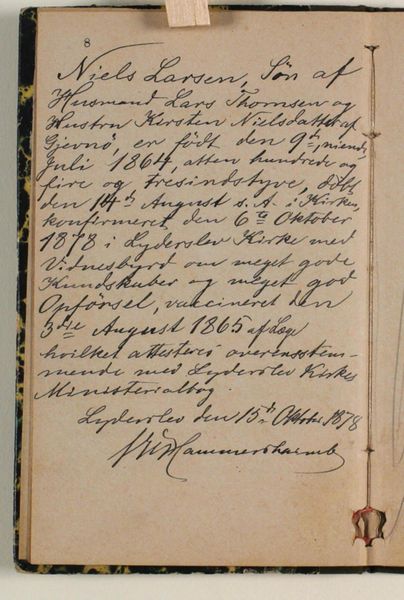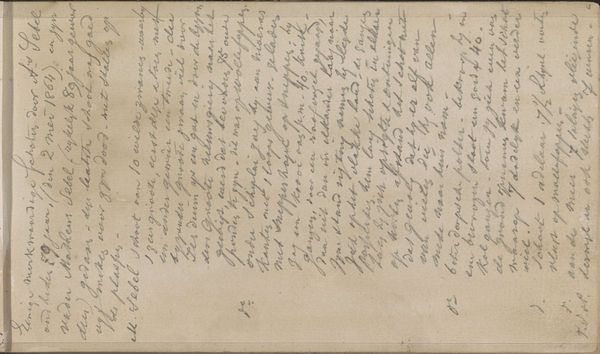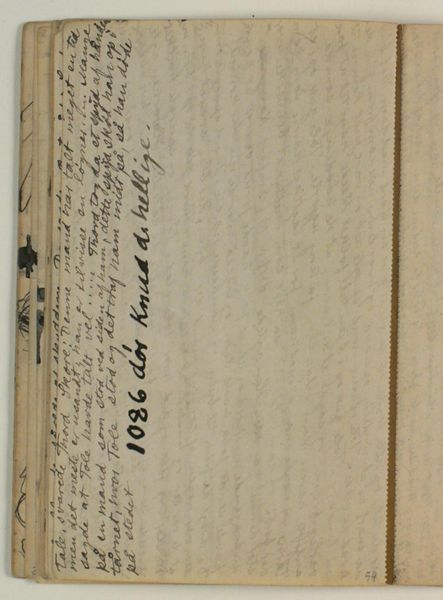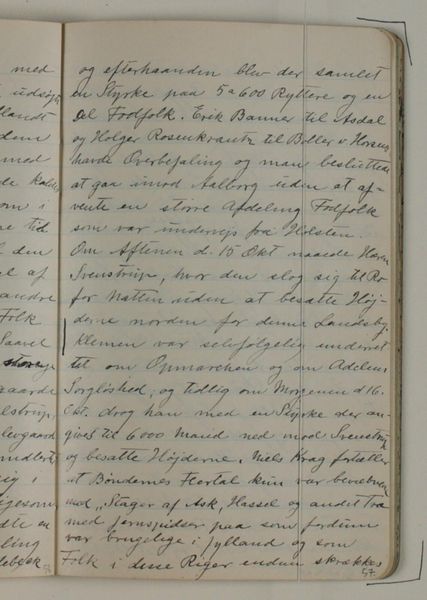
Notater vedr. Nørresundbys udseende i 1600-tallet, samt vedr. samtidig (?) beklædningsskik 1932 - 1935
0:00
0:00
drawing, mixed-media, paper, ink, pencil
#
drawing
#
mixed-media
#
paper
#
ink
#
coloured pencil
#
pencil
Curator: Let's discuss this piece by Niels Larsen Stevns, titled "Notes on the Appearance of Nørresundby in the 17th Century, and on Contemporary Clothing," created between 1932 and 1935. It's currently held at the SMK, Statens Museum for Kunst. He employed a combination of media, including drawing, mixed-media, pencil, ink and colored pencil on paper to produce this unusual artwork. Editor: My first thought is that it resembles a page torn from a scholar's research notebook. The density of handwritten text mixed with rough sketches suggests to me the preliminary stages of investigation, an intimate look at the artist's thought process. Curator: Precisely. Stevns was deeply engaged in historical research, especially focusing on the local history and culture of Nørresundby. These “notes” are actually part of his larger artistic project to vividly depict the town and surrounding areas during the 1600s. This piece compiles textual observations of 17th-century dwellings and clothing styles. Editor: It reads like an anthropologist's field notes, mapping the dress of an older culture. From my perspective, it bridges ethnography and art. But how reliable a historical document is this? Given its creation decades later? Curator: Good question. We can understand it less as literal record and more as an artistic interpretation of historical information. Stevns drew on multiple sources—written records, oral accounts, perhaps even other artworks—to reconstruct a sense of the past, imbuing his work with his own artistic sensibilities and interests. We should think of it as historical imagination given physical form. Editor: Yes, so it seems that Stevns’ focus goes beyond just the accurate depictions. The very act of archiving such minute cultural details feels like an assertion of cultural identity and pride. Who has historically been deemed worthy of record, and whose stories do we retell and how? Those questions spring to mind. Curator: Indeed, thinking about who has historically been considered worth archiving allows us to bring fresh awareness to such projects. The role of cultural institutions is also implied, with artworks that continue speaking across generations. Editor: Definitely, and thank you, these combined contexts enrich this rather raw and sketch-like artwork and give me a greater appreciation for it. Curator: My pleasure. Stevns invites us to view art as another tool in better interpreting history.
Comments
No comments
Be the first to comment and join the conversation on the ultimate creative platform.

